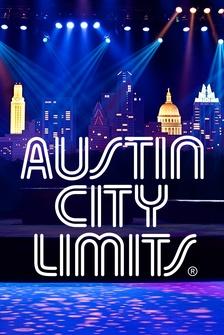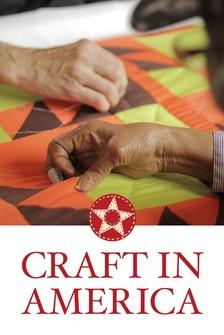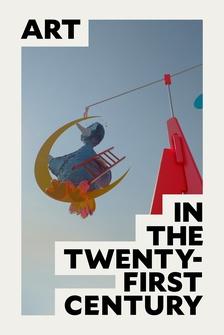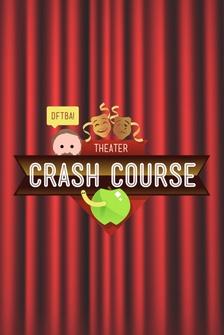♪♪♪ Duran: The open road has always been an open invitation to me, winding through new adventures and personal experiences.
The sofa who belongs to Napoleon's house.
Napoleon Bonaparte?
Yeah.
Wow.
And nowhere does this happen more often than along the yellow roads.
♪♪♪ On a Michelin map, one will find many different colored roads.
While red are the major highways, it's the yellow roads I'm chasing, the more scenic roads winding through a country, through cities and towns, and never knowing what lies just beyond the horizon.
Okay, I'm going to be stuffed after this meal.
It's these roads that are calling me on a journey unlike any other.
♪♪♪ My name is Paulino Duran, and I travel the world looking for exotic and unique experiences.
I'm always up for making new friends, listening to tall tales, and trying fantastic cuisine.
♪♪♪ ♪♪♪ So I planned out my trip.
My agenda is set, and I'm ready to explore the yellow roads.
♪♪♪ ♪♪♪ ♪♪♪ The Italy of today is a country that draws millions to experience a friendly culture and relive the ancient history of this enchanting country.
♪♪♪ But over a century ago, Italy was a very different country.
Well, to the north, you had Tuscany and the papal states, and to the south, you had the Kingdom of the Two Sicilies.
[ Officina Zoè's "Mare d'Otrantu" playing ] ♪♪♪ Palermo on the island of Sicily and Naples on the mainland in Southern Italy were the two capitals of the kingdom.
The influences in Northern Italy are much different than the ones in the South.
The ones in the South, you see a lot more Moorish architecture.
You see a lot more Greek influence.
The Kingdom of the Two Sicilies were annexed in 1860 to form the Kingdom of Italy in 1861.
This is the Italy we know today.
What intrigued me about the South of Italy was the Kingdom of the Two Sicilies.
I thought the best place to start my adventure was the Puglia region.
♪♪♪ The Puglia region lies in the Southeastern part of Italy along the Adriatic Sea.
♪♪♪ Sun-drenched beaches and blue water mixed with fertile soil and sprawling farmland.
The Puglia region of Italy seemed completely open.
You felt like you could just look for miles.
Personally, I felt a very authentic feel in Puglia.
[ Officina Zoè's "Venti e burrasche" playing ] ♪♪♪ My travels along the yellow roads have brought me to the city of Lecce.
♪♪♪ It's been conquered by the Romans, the Normans, Hungarians, survived a plague in 1656, and is known for its Baroque style architecture, which is very unique for a city seated right smack in the heel of Italy's boot.
What I thought was cool about Lecce is you had this Roman amphitheater, and then you turn to your right, and there's all this Baroque style architecture from the Renaissance era.
It's a city that embodies both Italy's rustic heritage and refined virtues.
From the beautiful frescoes of Basilica di Santa Caterina d'Alessandria to the modern cuisine of Anima & Cuore, Lecce's culture and history portray a city with elegance and style.
And outside the city limits in the countryside, amidst the olive trees and rolling hills is the other side of Puglia, the agricultural.
So this site is called Le Stanzie.
It's a place full of history.
It's got Roman history.
There's a Roman road down there.
It's here I meet Awdie Coppola, a local historian.
But the most interesting today, this place is famous for slow food.
Do you like slow food?
I love all food.
Okay, good.
This is the right place for you, Paulino.
♪♪♪ ♪♪♪ Le Stanzie embraces the traditions of rural Puglia.
This Italian countryside farmhouse dates back to 1200.
♪♪♪ Here in the south of Italy, we actually very fussy about finding authentic, traditional places.
For us, food is something really important, food and good friends.
Social relations are very important, fundamental.
♪♪♪ Pizzica music is very popular in this part of the country and is part of the larger family of tarantella style of music and dance.
It was believed that a woman bitten by a tarantula spider while working in the fields would need to dance in order to excise the spider's poison.
[ Woman singing in Italian ] ♪♪♪ In the past, Puglia was just covered with farms and peasants and farmers working in the fields.
Today we have less of them.
And this is one of the places where you actually found the old traditions again, living traditions.
And they're fighting for this.
So I'm with them.
I like this place.
I love it.
♪♪♪ ♪♪♪ [ Camera shutter clicks ] Awdie tells me about the history of this place and introduces me to some very traditional Italian food.
This region is a paradise if you're a vegetarian.
And then, the olive oil.
The olive oil is like gold on your dish.
Really?
This olive oil?
Absolutely.
This is the olive oil?
Absolutely.
The harvesting technique is the best one.
So picking olives, plucking them from the tree by hand.
♪♪♪ Do you know what Homer said?
Puglia is the land of perennial spring.
♪♪♪ ♪♪♪ [ Cheers and applause ] ♪♪♪ As I travel further into this land of endless spring.
Awdie suggests I visit a town that continues to live like their ancestors have for over 500 years.
[ Officina Zoè's "Fice lu ngegnu" playing ] I make my way to the town of Alberobello and find some of the most unique houses in the world.
♪♪♪ The trulli houses are specific to this region of Italy, consisting of conical roofs made of stone.
The design dates back over 1,000 years.
[ Camera shutter clicks ] ♪♪♪ Today the homes are still occupied.
♪♪♪ And being invited into one was a very unique experience.
♪♪♪ They were so kind.
I sat, and I chatted with them in their home, and they told me their house was over 500 years old.
It was as if two different times existed in the same space.
Modern appliances and conveniences amidst the character of the ancient architecture.
♪♪♪ [ Camera shutter clicks ] ♪♪♪ The people in the South of Italy are proud of their traditions.
They practice them with reverence and hold tight to them in an ever-changing world.
I make my way to Bari, the capital of Puglia, to find out more about this.
It's dusk when I roll into town.
Bari has a big-city vibe to it, so I asked Francesca Milano, a friend of Awdie's who grew up in Bari, to take me to a local hangout.
So, this is basically the street where everybody will take a stroll, but actually, they stroll everywhere.
They take a stroll everywhere.
♪♪♪ Duran: So, I notice everything starting to change -- the architecture, the cobblestone streets.
Where are we heading into right now?
Now we are going into the heart of Bari, so where actual people live.
So what I love is in about the span of 10 feet, it seems as though we just left the future, and now we're hundreds of years in the past.
Exactly.
That's what it is.
And you will see it, as well.
[ Officina Zoè's "Li bellizzi" playing ] Wow.
Ta-da.
I guess so.
That kind of opened up out of nowhere.
We were just in the tiniest streets, and it looked like everyone was asleep and quiet.
You turn a corner, and boom.
Everybody was here.
It's a mammoth piazza with everybody.
I didn't expect to find a party in a piazza with cheap beer and food made by locals.
Literally, right out their front doors, they set up stands.
You know, they are housewives, and they do this for passion.
So they started by cooking for their families and friends.
And now they have a special permission to do this.
Home cooking at its finest.
Piazza felt real.
It felt genuine.
I mean, you're with the locals.
It felt like true Southern Italy.
The South of Italy has always been considered a little bit backwards, like we didn't have culture, tradition, and nothing important to show people.
And to prove that it's not true is that you're here, actually.
I agree.
I don't feel it's backwards at all.
I feel, if anything, they've kept tradition and culture alive, so much so that you see it in people.
You see it in food.
You see it in the structures and the buildings and that kind of old history that's been kept and held onto tight, you know?
Yes, exactly that.
We have values.
We have traditions.
And I love how traditional families still are struggling to keep those traditions alive.
And this place is also one of the most amazing places that we go to when we want to take a stroll and enjoy our life.
Even with no money, you -- Well, you don't need money for this.
I mean, this was -- It's like 1 euro, 1 euro, 1 euro.
3 euros, and you're done.
Yeah.
Well, food is not only food.
It's not just to feed yourself.
It's to feed your soul, because it's social.
Like, you go out to meet people, to have a chat.
But anytime you invite a friend for a chat, you are never on an empty table.
You always have a coffee or a taralli or a glass of wine or panzerotto or something to eat.
I don't know.
It's something in our roots.
Sometimes I think Italy can almost make it too easy for travelers that the authenticity can get lost.
But this half of the kingdom really holds tight to that authenticity.
You just need a local to bring you into it, to show you around.
The other kingdom of Sicily is on the island itself.
♪♪♪ Surrounded by the Mediterranean Sea, this is where you can say the East meets the West.
So I just landed on the island of Sicily in the city of Palermo.
And I'm here in its city center, which seems so old, so crazy, tons of amazing architecture.
I'm gonna see if I can't go get lost.
For thousands of years, Sicily was conquered again and again by powerful empires of the times.
If you held Sicily, you held the Mediterranean.
It's been said that the Sicilians' laid-back attitude has come from invasion after invasion.
Sicily is literally the gateway to the Mediterranean.
And to show you that, the eclectic mix of all the cultures that reside here, you can even see it on a street sign where you have Italian, Hebrew, and Arabic, and that's just on a street corner, not a museum, not a fancy restaurant.
That's just people walking around in the old city center.
The island was colonized by the Greeks before being conquered by the Romans, the Byzantine Empire, Vikings, Germans, even Spain.
Palermo is a city with thousands of years of history.
So, I'm standing in Palermo's town hall.
But check this out.
They built, obviously, all this.
But what they built it over -- Check it out -- was the old ruins and the old stone walls right here.
I felt like it had to be a big struggle for Sicilians, 'cause there's so much art and so much history that I felt like they were at that point of, "What do we do?
How do we preserve it?"
One young man is trying.
Andrea Chiaramonte Bordonaro is the son of Baroness Antonella Chiaramonte Bordonaro.
Her family owns an impressive art collection started by her great-grandfather in the 18th century.
Duran: So, this is Villa Carlotta.
Andrea: Exactly.
Okay.
The name belongs to an ancestor of mine, an American woman who married my great- great-great-grandfather.
And they built this house like a Tuscany palace of the 16th century and put inside all of their collection about piece of art of the 16th century, too -- for example, paintings, drawings, pottery, and ceramics.
Another very particular thing in this room is the sofa who belongs to Napoleon's house.
Napoleon Bonaparte?
Yeah.
As you can see from the two letter, Louis Bonaparte.
Wow.
Yeah.
My school was this house.
I learned here a lot of things about art and a piece of art.
The art collection that Andrea showed me was incredible, especially the fact that it was privately owned.
This is the library, my favorite room.
The smell.
Yeah.
Wow.
And it immediately gets peaceful.
It's like the books kind of dampen all the sound from the tile and the -- Exactly.
It's very calm.
My favorite book is here.
It's a very ancient book.
It was one of the first ever printed in history.
It was printed in 1493.
"The Nuremberg Chronicle" was a groundbreaking, encyclopedic work, and at the time, it was the most lavishly illustrated book ever printed.
And here in front of me is one of the original copies, now over 500 years old.
So, and he's painted by hand with watercolor.
Look.
Incredible.
Wow.
And you're just allowed to touch it with your bare hands?
Well, yes, because it's mine.
No one can see me.
Well, there you go.
If it's yours -- ♪♪♪ I think in my DNA, there is to be involved in the art.
I'm very curious about the object, their story, how to preserve in the future.
There's so much to see, from the art to the architecture.
I felt like everywhere we went, it was art.
[ "Un bel di vedremo" playing ] ♪♪♪ A city this old surely has its share of secrets and ghost stories.
Paulino, please be careful there, the last step, because a lot of people fall down from there, and we think that there is a ghost.
And probably it's the ghost of a nun, because before the theater, here, there was a monastery that was destroyed.
So right here.
So pay attention.
This one.
People fall.
Yes.
It's our Phantom of the Opera.
[ Both laugh ] Phantom of the Staircase.
Meet Anthea Gulino.
Anthea works at the Teatro Massimo Opera House and grew up in Palermo.
You have to know that is the biggest theater in Italy and the third in Europe after the Opéra Garnier in Paris and the Opera House in Vienna.
And we are very proud of this.
She offers to let me hear the orchestra practice before tonight's performance.
♪♪♪ ♪♪♪ ♪♪♪ Many dignitaries, statesmen, and celebrities have enjoyed the opera here.
Bill Clinton sat right here.
Princesses sit here.
Kings sit here and Paulino now.
Gonna put my plaque on the back of the seat.
Will you be my first lady?
Yes.
Yes.
Okay.
Thank you.
Thanks.
Thank you.
Thank you.
Alright.
♪♪♪ Love.
Death.
Passion.
[ Man speaking Italian ] Duran: Betrayal.
Murder.
And in Sicily, operas come in all shapes and sizes.
♪♪♪ The tradition of marionette theatrical productions in Sicily can be traced back to the 18th century.
Today, at the Opera dei Pupi theater, artisans craft handmade puppets, sets, and wardrobe for each production, passionate people embracing the traditions of their art.
Traditionally, Sicilian marionette productions are often tales of knights fighting off invaders or competing for the hand of a fair maiden, protectors and guardians of the just and righteous.
And there are still knights in our world today.
This is Pietro Beneventano del Bosco, a knight of Malta, the Baron of Syracuse.
♪♪♪ In its heyday, Syracuse was the largest city in the ancient world, bigger than Athens or Corinth.
♪♪♪ Everywhere I turn, I'm finding Sicily played a big part in shaping world history.
The Baron told me a story about Lord Nelson and the Battle of the Nile.
Nelson was in Syracuse twice.
It was before the Battle of the Nile.
And this is, I wrote something about destiny, because it was destiny that he found -- He tried to find the fleet in the Mediterranean of Napoleon.
And then everyone knows about the Battle of the Nile that changed completely the geophysical and geopolitical situation of the Mediterranean.
♪♪♪ His palazzo is adorned with art, historical artifacts, a private chapel... ♪♪♪ ...and a wine cellar filled with bottles from his personal vineyard.
♪♪♪ The history of Sicilian wine dates back to the time when legends were told of the Greek god Dionysus bringing wine to Sicily.
♪♪♪ Today, a powerful god in its own way provides everything a vintner would need to produce unique and traditional Sicilian wine -- Mount Etna, Europe's tallest active volcano.
Its last eruption was in 2017, and in its shadow is the town of Taormina.
♪♪♪ Like much of Sicily, Taormina blends ancient Greek and Roman design elements, creating a city that is charming and unique.
Sitting here in this massive coliseum with a view of Mount Etna.
This was built in 3rd century B.C.
We're talking before Christ.
And here I am sitting on this looking at all this.
The sunrise was very beautiful that morning, before the city awoke and came to life.
Today, I'll be heading up to Mount Etna to try some amazing wine.
Oh, Etna is a completely different place of wine making in Sicily.
Barbara Liuzzo and her husband own the Barone di Villagrande Winery on the north side of Mount Etna.
'Cause we stay at 700 meters especially in our winery so we can produce a mountain style of wine.
So on the flat area, you have more colored wine, but maybe less elegant and less intense in tannins.
But in this area, we can really produce fine and elegant style of Sicilian wine.
♪♪♪ This impressive winery has a unique relationship with this active volcano.
♪♪♪ Seated on the mountain slope, the very wine they produce is 100% courtesy of Etna's unique soil and weather climate.
[ Music playing ] Etna provide everything in the region of the production.
So we use only our resources directly from the area of Etna and from our winery specially.
Okay.
So really, really zero meters.
Yeah.
Yes.
It's just behind you.
I find out that the winery was completely destroyed in 2001 due to an earthquake.
They had no problem rebuilding.
They need Mount Etna to make this wine.
This is the wine they've made for hundreds of years.
Yes, always we don't know what about Etna tomorrow.
We are used to live with Etna, but we always say that Etna is close to us.
And you have to live it to understand exactly the feeling we have on Etna.
But Etna is part of us.
♪♪♪ [ Officina Zoè's "A Nuvaie" playing ] Passion for history, for cuisine, for preservation of art, culture, traditions, the yellow roads led me to authentic people.
Their spirit to remain true to their culture while adapting to a fast-paced world has created a Southern Italy that is outside of time.
♪♪♪ Roads are just the open space, the in-between.
These roads remind me that connecting with people not just the places, allows me to bring a part of Italy wherever I go.
♪♪♪ Here's how it's going to go, guys.
I'm starting a bike gang in Italy.
Alright?
And I'd like you to be my first bike gang people.
Okay!
Aah!
Here we go.
♪♪♪ ♪♪♪







